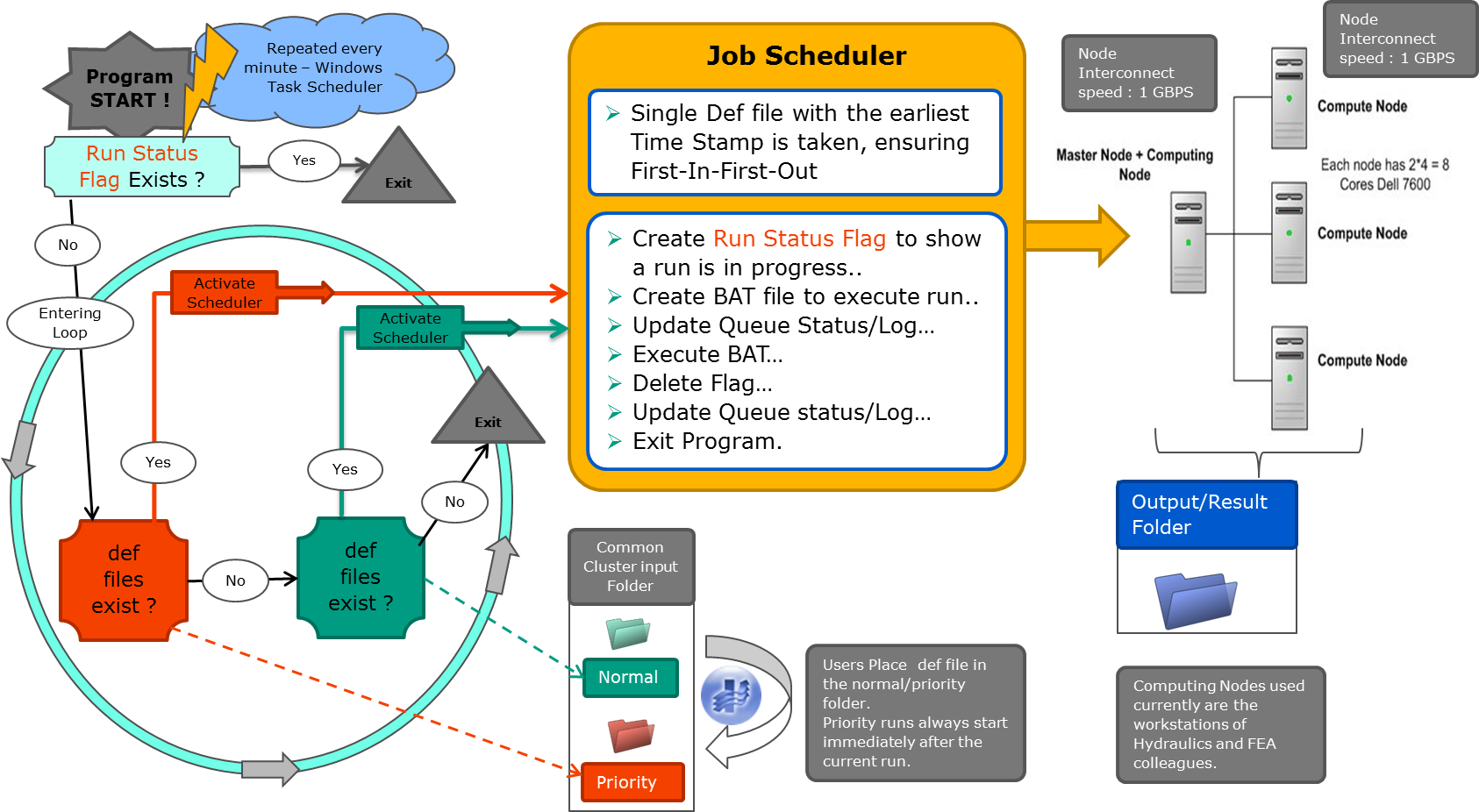CFX Job scheduler
 Photo by Jo Szczepanska on Unsplash
Photo by Jo Szczepanska on Unsplash
Introduction
This is a Python script for a portable, scalable job scheduler with multiple priorities - for ANSYS CFX simulations. The script was designed to be called every minute by an external scheduler program.
- In the practical case, the free version of the software System Scheduler was used to deploy the script successfully, for over 3 years, managing 2 computing clusters.
Once called, the program basically loops through pre designated folders and lists .def files based on the last modified date available in Windows. The system interaction was via BAT scripts created via the Python code, as well as the python OS library. There are several in-built flags to support priority, pausing a particular cluster, logging data and troubleshooting.
The idea behind the project was to create a multi-platform job scheduler for ANSYS CFX that has a balance between sophistication and ease of deployment (and management). Typically job schedulers and load balancing programs are relatively very sophisticated and complex to setup with several pre-requisites and constraints. Such complexity dictates expensive commercial support and licensing considerations.

Problem Statement
A job scheduler or simulation management system was required to address the following:
- Optimum and continuous simulation solver license utilisation by all members of the team in a First-In-First-Out (FIFO) basis,
- Provision for dynamic or urgent priority jobs, as well as an interface to submit simulations or view job history.
- Optimisation and management of workload of simulation jobs facilitating overall project management and planning.
What the program accomplished
- Allowed users to submit simulations by simply placing the input files in a particular folder location, which also served as a particular priority basket.
- Removed the need of creating manual scripts to submit multiple simulations and resolved inefficient license utilisation approaches.
- Facilitated a optimised approach to certain design cases, thus resulting in a 75% reduction in simulation time
- Enabled the use of consistent solver and memory utilisation parameters and settings, allowing efficient deployment and reducing inefficiencies due to errors.
- Allowed optimal or perfect utilisation of available licensing scheme, resulting in a significant increase in team output and productivity.
Tools used and links
- Written with Python 2.7, using portable python, Spyder, Notepad ++ and Sublime Text 3.
- System Scheduler